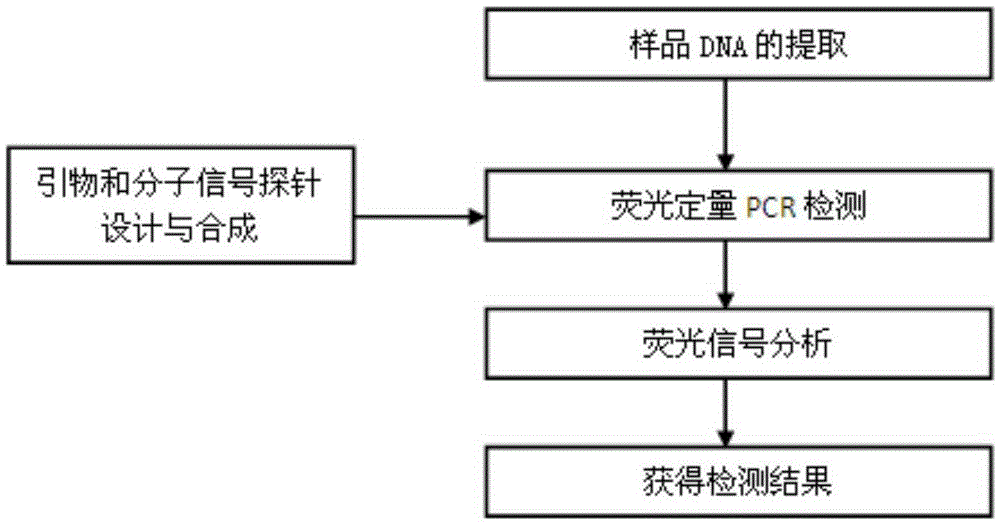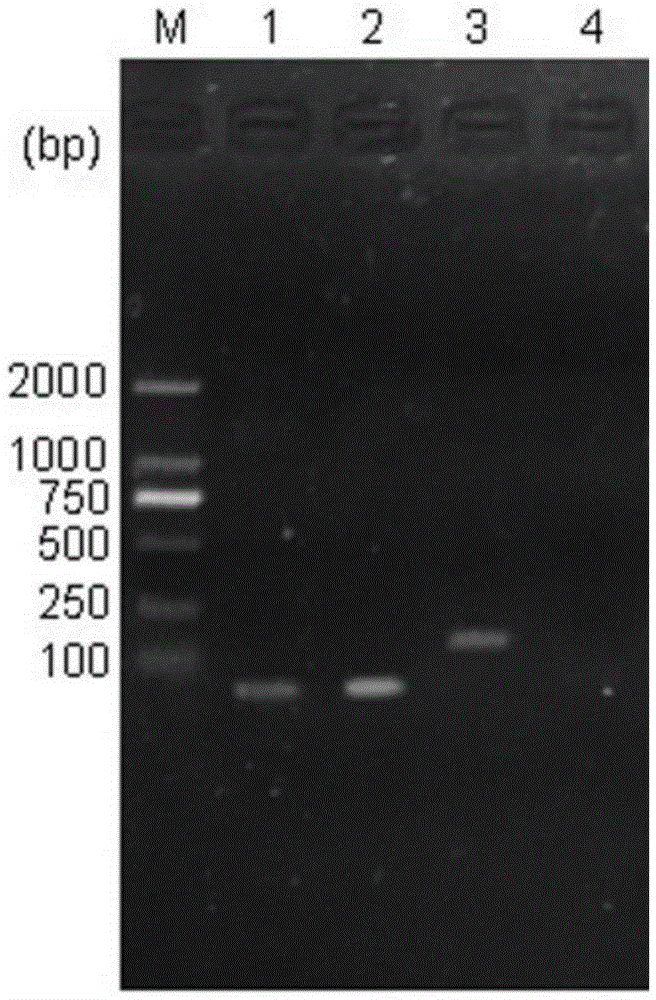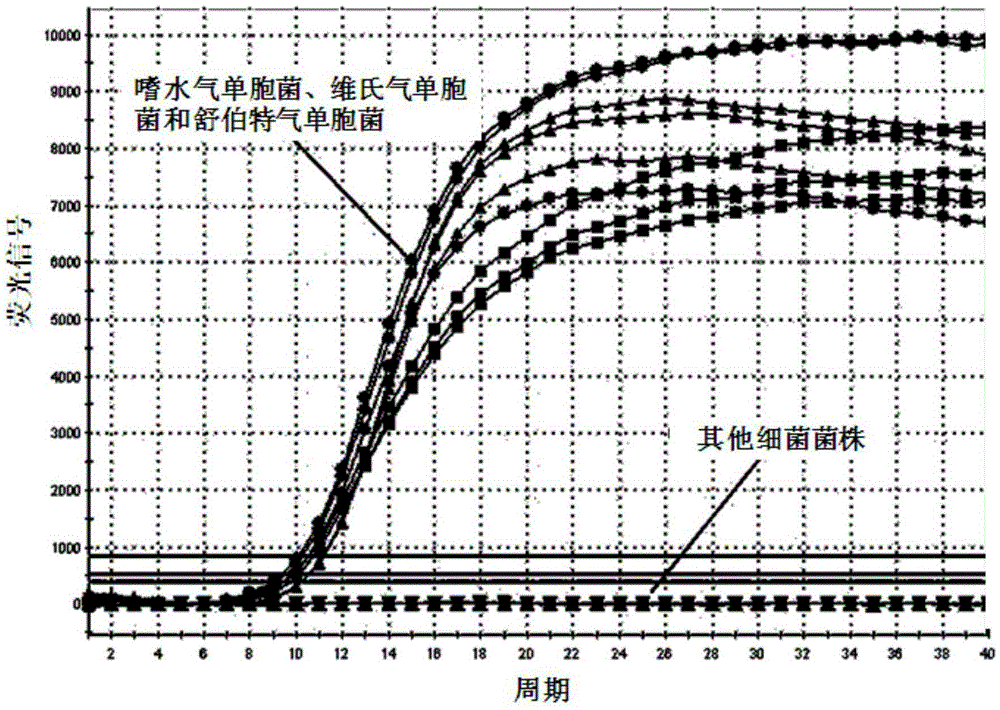Multiple PCR primer set and probes and detecting method for simultaneously detecting three kinds of aeromonas
An Aeromonas and detection method technology, applied in the field of biological detection, can solve the problems of high gene homology and difficult to distinguish, and achieve the effects of good repeatability, improved specificity and high sensitivity
- Summary
- Abstract
- Description
- Claims
- Application Information
AI Technical Summary
Problems solved by technology
Method used
Image
Examples
Embodiment 1
[0064] Example 1: Design and synthesis of specific primers and molecular beacon probes
[0065] The Aer gene sequence of Aeromonas hydrophila (accession number: M16495), the Aer gene sequence of Aeromonas victoria (accession number: EF034117) and the gyrB gene sequence of Aeromonas schubertius published on Genbank (accession number: JQ319030.1) carry out homology comparison, determine the selection range of each strain-specific primer and probe, apply Primer5.0 software to find all possible primer and probe sequence combinations, and screen qualified primer and probe sequences, The specificity was analyzed by BLAST software, and three pairs of specific primers and corresponding TaqMan probe target sequences were obtained. 5'-labeled FAM fluorophore for Aeromonas hydrophila probe, 5'-labeled HEX fluorophore for Aeromonas victoria probe, 5'-labeled CY5 fluorophore for Aeromonas schubertii probe group.
[0066] Primers and probes are as follows:
[0067] Aeromonas hydrophila u...
Embodiment 2
[0077] Sensitivity Analysis of Embodiment 2 Aeromonas hydrophila, Aeromonas victorii and Aeromonas schubert multiplex PCR detection method
[0078] 1. Experimental method
[0079] (1) Preparation of samples: construction method of standard plasmids: use the above-mentioned three kinds of Aeromonas upstream and downstream primers (SEQ ID NO: 1-2; SEQ ID NO: 4-5; SEQ ID NO: 7-8) respectively to corresponding bacterial DNA Amplified by conventional PCR method to obtain figure 2 The calculation fragments of corresponding sizes are shown, and the nucleic acid sequences are shown in SEQ ID NO: 10-12. After the amplified fragments were purified, they were cloned into the pMD19-T vector by TA, identified by sequencing, and the recombinant vectors with correct sequencing results were transformed into DH5α competent cells, and the plasmids were extracted after amplification to obtain the plasmid DNAs corresponding to the three bacteria . The plasmids of the three bacteria were then ...
Embodiment 3
[0091] Example 3 Aquatic Animal Infection Aeromonas Detection and Specificity Analysis
[0092] 1. Experimental method
[0093] (1) Preparation of samples: samples were taken from diseased fish positive for Aeromonas hydrophila, Aeromonas vieterii and Aeromonas schubert, and the tissues of the liver, spleen and kidney of the fish were taken The samples were mixed a little, and the diseased fish tissues positive for Aeromonas temperatus, Escherichia coli, Flavobacterium columnar and Pseudomonas fluorescens were mixed as the control. DNA from the above tissues was extracted using a microbial DNA extraction kit to obtain a DNA template.
[0094] (2) Reaction solution preparation:
[0095] Prepare the reaction solution according to the following table:
[0096] Element
Volume (μl)
2×SG probe Master Mix
10
DNA template
1
Upstream primer (10μM)×3
0.5×3
Downstream primer (10μM)×3
0.5×3
Probe (10μM)×3
0.5×3
d...
PUM
 Login to View More
Login to View More Abstract
Description
Claims
Application Information
 Login to View More
Login to View More - R&D
- Intellectual Property
- Life Sciences
- Materials
- Tech Scout
- Unparalleled Data Quality
- Higher Quality Content
- 60% Fewer Hallucinations
Browse by: Latest US Patents, China's latest patents, Technical Efficacy Thesaurus, Application Domain, Technology Topic, Popular Technical Reports.
© 2025 PatSnap. All rights reserved.Legal|Privacy policy|Modern Slavery Act Transparency Statement|Sitemap|About US| Contact US: help@patsnap.com



